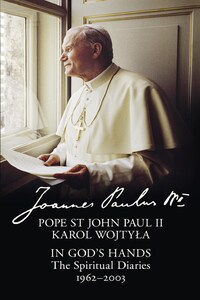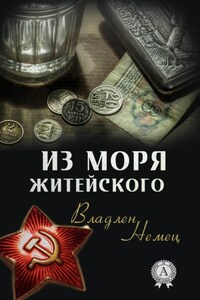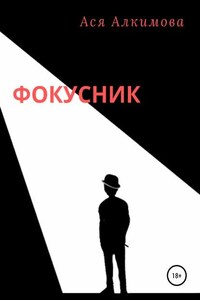To M., who guided and inspired
To Derek and to Tom
Contents
Cover
Title Page
Dedication
Prologue: A Figure of Speech
1. Celebrating the Marriage
2. A History of the Romance
3. Off on the Wrong Foot
4. The Norton Lectureship
5. Meeting Borges and Setting Out with a Master
6. Georgie’s Mystery, Elsa’s Bombshell
7. A Visitor and a Yard of Ale
8. Vietnam, Olga, and Harvard Square
9. Borges on Tour
10. Invitations and Goodbyes
11. Interregnum
12. Arrival
13. Settling In
14. The Recoleta
15. Cracks in the Façade
16. Oklahoma and the Fur Coat
17. Hobnobbing with the Rockefellers
18. New York and the Fur Coat
19. Buenos Aires and the Fur Coat
20. Silent Sufferer
21. An Aside
22. The Breaking Point
23. The Reckoning
24. Amongst the Lawyers
25. The Night of the Oxford Martyrs
26. Escape to Córdoba
27. The Mosquito and the Judge
28. The Salem Mystery Solved
29. Return to Maipú
30. Looking Back
Epilogue: Ave Atque Vale
A note on Borges
Picture Section
Copyright
About the Publisher
Synecdoche, a part standing for the whole.
In 1944, in the kind of incisive and highly literary statement typical of him, the celebrated Argentine poet and storyteller Jorge Luis Borges postulated in one of his tales that ‘Any life, no matter how long or complex it may be, is made up essentially of a single moment – the moment in which a man finds out, once and for all, who he is.’
Borges’s ultimate fame as a writer is based on a mere thirty-four stories written between 1933 and 1953 and published in two collections, Ficciones and El Aleph. His fiction was unpopular at the time, considered cryptic and abstruse, and it wasn’t until he was in his seventies that he began to be swamped with awards and prizes and honours – among them, honorary degrees from both Oxford and Cambridge.
At birth he had been given his father’s first name. In a household of English speakers – with a grandmother and great aunt of English stock – it was only natural that to distinguish father and son he be dubbed Little Jorge, or Georgie. The name stuck. To his family and to a handful of intimates he was known ever after as Georgie.
The story told here in Georgie & Elsa, in which I was both reluctant witness and tricky participant, took place in a three-year span between 1967 and 1970. What I have recounted, besides depicting and illuminating hitherto unknown facts and events in the couple’s affairs, is an attempt to find out whether a person’s life can be typified by a single part of it. Can the ups and downs and vicissitudes of a brief marriage reflect and define the essential character of either of the partners in that alliance? In short, can a marriage of only a few years’ duration reveal a man’s whole life? The man is Borges. What does his short, failed marital union with Elsa Astete Millán tell us about him?
Jorge Luis Borges and Elsa Astete Millán were married at a Buenos Aires registry office on 4 August 1967. The occasion seems not to have excited the notice of the press. On 21 September came a follow-up ceremony in the Iglesia de Nuestra Señora de las Victorias, where both Borges’s mother Leonor and his sister Norah – the two of a religious bent – had married.
These events took place on the eve of Borges’s departure for Harvard University, where, over the following months, he was to deliver the prestigious Charles Eliot Norton lectures. Hitherto a life-long bachelor, Borges was sixty-eight years old at the time of the wedding; Elsa, a widow, with a son in his twenties, was eleven years younger. The trip to Cambridge she described as her honeymoon; as for the lectureship she appeared to look on it as an altogether secondary matter.
The church of their marriage had been built in 1880 in the plain neo-Gothic style of the time and place, the belltower and steeple, with its four pinnacles, towering over the buildings crowded round it. Soon after, in 1883, the edifice was given to the Congregation of the Redemptorists on the day of their first arrival in Buenos Aires. Founded in Italy in 1732, the Congregation is a missionary society whose aim is to put into action Jesus Christ’s command to ‘Love one another as I have loved you.’ In 1884, the Church of Our Lady of the Victories also became a seat of the cult of Our Mother of Perpetual Help, the Byzantine icon of which the Redemptorists are caretakers. Such was the improbable and incongruous setting for the marriage of a man of Borges’s well-known agnosticism and sceptical turn of mind.
In the published pictures of the church ceremony Borges stood staring ahead, hands behind his back, with Elsa on his right and his mother of ninety-one on his left. The church was packed with friends and well-wishers, along with numerous members of the press and their accompanying photographers. The bride wore a black coat-dress, with a pair of long black gloves, and a white turban-like hat with a short, gauzy veil over thick false eyelashes. Neither Georgie nor Elsa looked as if it were the happiest day of their lives. While Leonor appeared solemn, the couple seemed glum.














